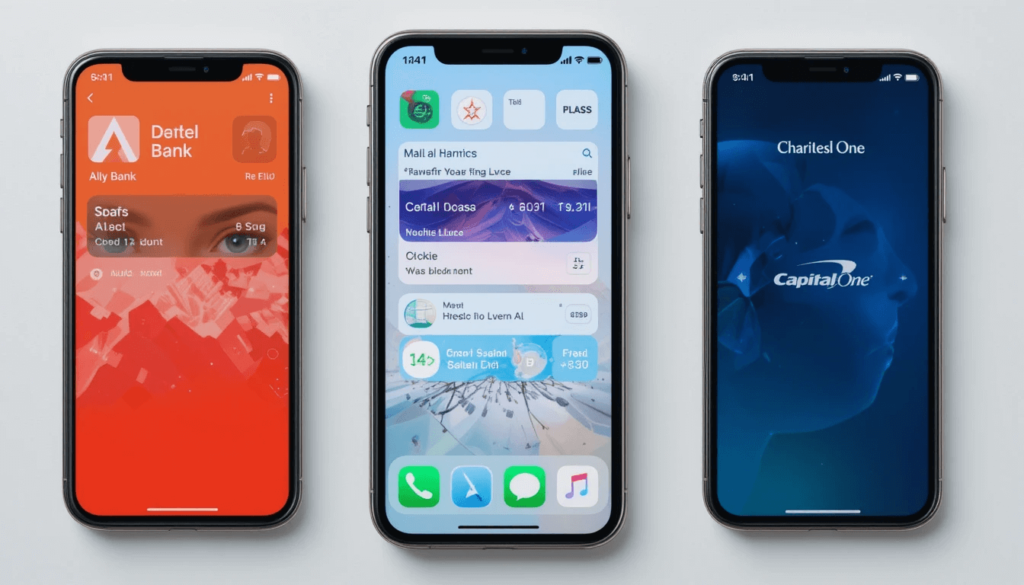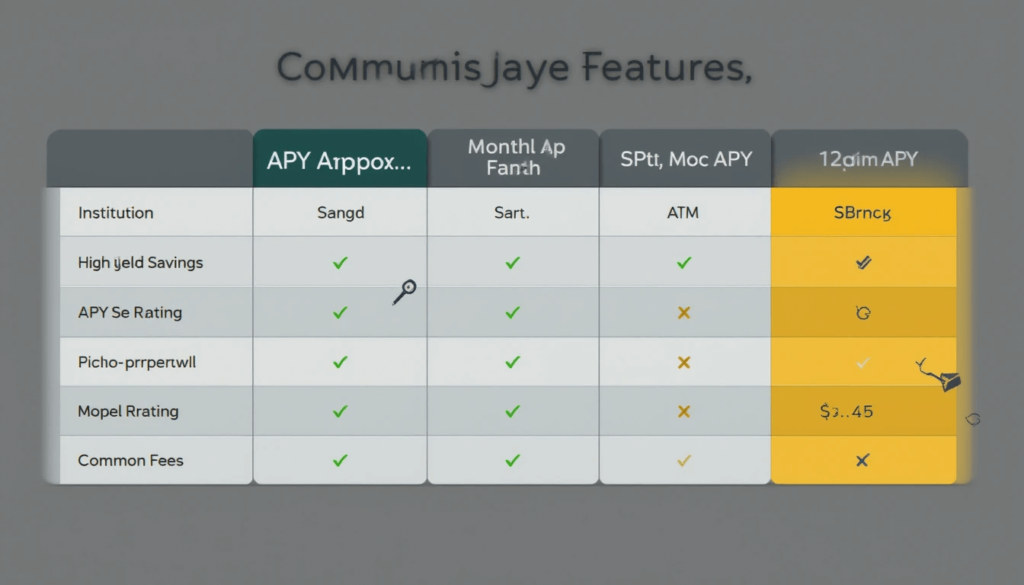We’re millennials. Financial Institutions We grew up with the internet, smartphones glued to our hands, and a healthy dose of skepticism. We’ve seen recessions, student loan debt that feels like a life sentence, and housing prices that make us laugh (and then cry). Our relationship with money is… complicated. We want convenience, transparency, and ideally, for our money to not just sit there looking pretty, but actually do something.
My friend, Maya, bless her heart, was still writing checks last year. Checks! She looked at me, totally lost, and said, “Dude, I seriously thought all banks were basically the same!” And I had to tell her: “Maya, honey, no. We live in the future now!” The truth is, the banking world has finally started catching up to how we live. It’s no longer about fancy marble lobbies; it’s about slick apps, no fees, and sometimes, actual interest on your money.
Now, before we get into my totally unofficial, completely subjective, but also pretty good list of the Top 5 Financial Institutions for Millennials, a few disclaimers because I’m not a monster (I just play one on the internet, sometimes messy, sometimes brilliant):
- “Best” is Personal! What’s right for me might not be right for you. Think about your priorities: Do you need a physical branch? Do you care most about high interest? Are you super into budgeting apps?
- Rates & Features Change! Banks, like my hair color, are constantly changing. What’s awesome today might shift next year. Always, always check the bank’s official website for the most current details, APYs, and fees before you open an account.
- FDIC/NCUA Insured! This is non-negotiable. Make sure any bank you consider is FDIC insured (for banks) or NCUA insured (for credit unions). This means your money (up to $250,000 per depositor, per institution) is safe, even if the institution goes belly-up. It’s like a financial superhero cape for your cash.
Okay, deep breath. Let’s talk about where your money should be living if you want it to thrive, not just survive.
The Evolution of Banking: What Millennials Actually Want (and Need!)

We’re not our parents’ generation. We don’t necessarily want to spend our Saturday mornings waiting in line at the bank. We want:
- Killer Mobile Apps: Seriously, if your app looks like it was designed in the AOL dial-up era, I’m out. We live on our phones. Banking should happen there, seamlessly.
- Low or No Fees: ATM fees? Monthly maintenance fees? overdraft fees for blinking too hard? Hard pass. We’re already juggling student loans and maybe, just maybe, affording avocado toast. We don’t need more fees.
- High-Yield Savings: Our money needs to work for us! We’re tired of 0.01% APY. Give us those juicy interest rates!
- Smart Financial Tools: Budgeting, spending trackers, bill pay reminders, maybe even micro-investing options. Give us tools that help us manage our money, not just hold it.
- Digital-First (but human when needed): We love digital convenience, but sometimes you just need to talk to a real person. Good customer service, easily accessible via chat or phone, is key.
My Top 5 Financial Institutions for Millennials: Smart Banking Choices (Categories, Really!)
Since listing specific banks is tricky (they change their tunes faster than Taylor Swift drops an album), I’m going to tell you about the types of institutions that generally crush it for millennials. Think of these as archetypes, and then you can go find the specific players within each.
1. The Slick, App-First, Branch-Free Wonders: “Neobanks” or Challenger Banks
- What they are: These are digital-first banks (or fintech companies that partner with traditional banks). They have no physical branches, everything is done through their app or website. Think of them as the Netflix of banking – no Blockbuster stores needed.
- Why they’re great for millennials: This is our native habitat! Seamless mobile apps, instant notifications, often great budgeting tools built right in, early direct deposit, and usually no monthly fees or minimum balances. They live where we live: on our phones.
- Examples to check out: Chime, Varo, Current, SoFi Money. (Remember, these are examples, not current endorsements, and features/rates change!).
- My take: My friend, Liam, moved to Chime years ago. He looked at me, totally lost, and said, “Dude, I seriously thought I’d miss having a branch, but I haven’t stepped foot in one since!” It’s like trying to explain vinyl records to a Gen Z kid – some people just don’t get the old ways.
2. The High-Yield Savings Superstars: Online-Only Banks
- What they are: These are established online banks (often divisions of larger financial groups) that specialize in offering significantly higher interest rates on their savings accounts compared to traditional banks.
- Why they’re great for millennials: We’re trying to save, right? For that down payment, that big trip, that emergency fund that everyone tells us we need. These banks make your money actually work for you. They usually have no monthly fees for their savings accounts and often competitive checking accounts too.
- Examples to check out: Ally Bank, Discover Bank, Marcus by Goldman Sachs. (Again, examples only! Do your own research!).
- My take: This is where I finally moved my emergency fund. I showed my spouse the interest payment, which was like 50x what my old bank gave me. They looked at me and said, “You seriously thought that was exciting?” It was. It really was. It’s like finding a secret cheat code for extra money in Financial Institutions.
3. The Digital-Savvy Giants: Large Traditional Banks (with a modern twist)
- What they are: These are the big names you already know (Chase, Bank of America, Wells Fargo, Capital One, etc.), but some have invested heavily in their digital platforms and offer competitive products.
- Why they’re great for millennials: If you really need a physical branch for depositing cash, talking to a person, or for specific services like safe deposit boxes, these are your best bet. Many have vastly improved their apps, offer strong fraud protection, and have a wide range of products (loans, investments, etc.).
- What to look for: Check if they have a fee-free checking option, a good mobile app, and if their high-yield savings (if they offer one) is competitive.
- My take: My mom still uses her big bank, and honestly, their app has gotten better. But you still gotta watch out for those sneaky fees. It’s like going to a fancy restaurant – sometimes it’s great, sometimes you just pay for the ambiance.
4. The Local Heroes: Credit Unions
- What they are: Not-for-profit financial cooperatives owned by their members. They focus on serving their members, often leading to lower fees, better interest rates (both on savings and loans), and more personalized customer service.
- Why they’re great for millennials: If you want a more ethical, community-focused banking experience, credit unions are fantastic. They often have better loan rates (auto loans, personal loans) and a more “human” touch than large banks.
- What to look for: You usually need to meet eligibility requirements (e.g., live in a certain area, work for a specific company, or join an association). Check their rates, fees, and digital offerings.
- My take: My cousin, Brenda, swears by her local credit union. “Dude, I seriously thought all banks were evil until I joined!” she told me. She loves that her money stays in the community and that they remember her name when she calls. It’s like banking with your cool aunt.
5. The “Bank Where You Invest” Integrators: Brokerages with Banking Features in Financial Institutions
My take: This is my current setup. I have my checking and brokerage account at the same place. It’s so easy to move money back and forth, invest spare change, etc. It’s like building your own financial ecosystem, all in one place.
What they are: Investment brokerage firms that have added banking features (checking, savings, debit cards). Think Fidelity, Charles Schwab, Vanguard.
Why they’re great for millennials: If you’re starting to get serious about investing (hello, Roth IRA!), having your banking and investments all in one place can be super convenient. They often offer competitive interest rates on cash balances and charge few fees.
What to look for: Check if they offer a good checking account (many have unlimited ATM fee reimbursements worldwide!), competitive savings rates, and a user-friendly investment platform.

My Own Banking Evolution: From Clunky to Clutch
My journey from a big, clunky bank to a more digital-first, high-yield setup was gradual. I started with a big bank out of habit. Then, I realized they were charging me for every little thing, and my savings were gathering dust. I looked at my bank statements and just sighed dramatically. I made the switch to an online-only bank for my savings first. The interest was addictive. Then, I realized my checking account could also be better. Now, I use a combination – one for the bulk of my savings, and another (integrated with my investments) for my everyday checking. It feels less like a chore and more like a strategy. It’s like I finally figured out the cheat codes for adulting.
Conclusion: Don’t Settle for Subpar Banking!
So, there you have it, my friend. We, as millennials, have unique financial needs and expectations. The traditional banking world sometimes just doesn’t cut it. But thankfully, there are some seriously smart, modern choices out there. The Top 5 Financial Institutions for Millennials aren’t just about where you keep your money; they’re about how your money works for you.
Don’t be like past-me, stuck with a dinosaur bank. Do your research, check the current rates and features, and pick a financial institution that actually aligns with your digital-first, financially-savvy self. Your future self, with more money in savings and less stress, will thank you for it. Cheers to smarter banking and making our money work!





